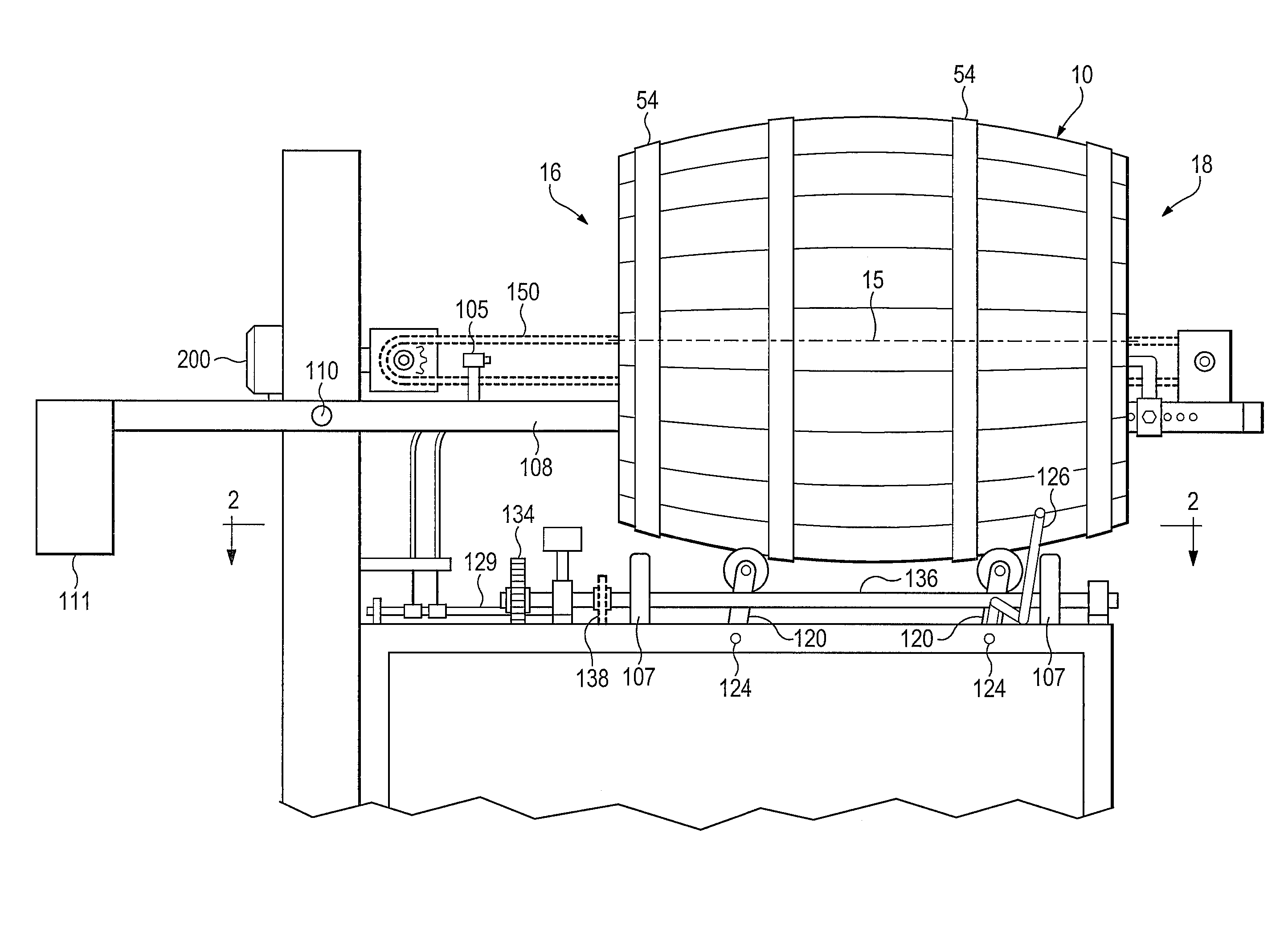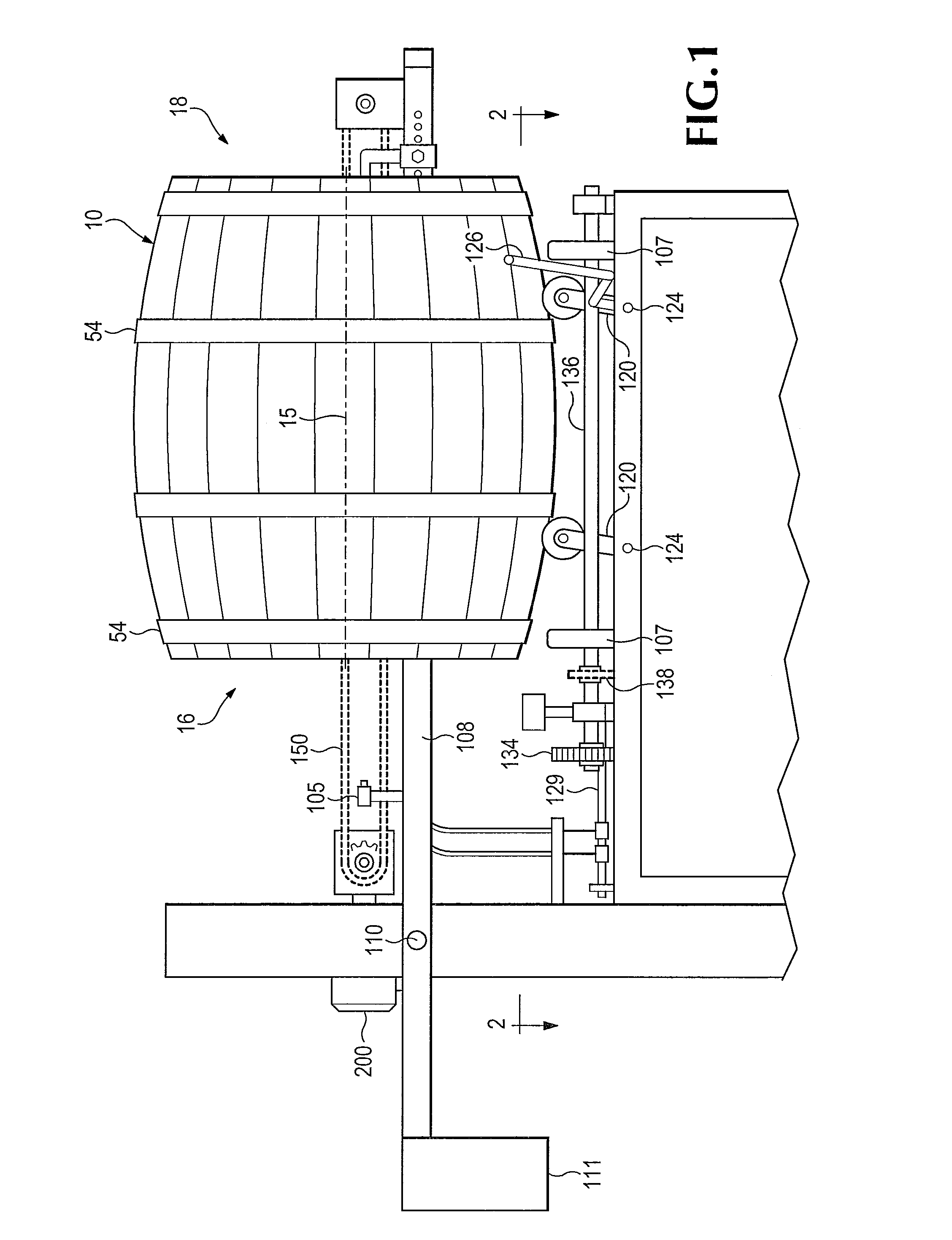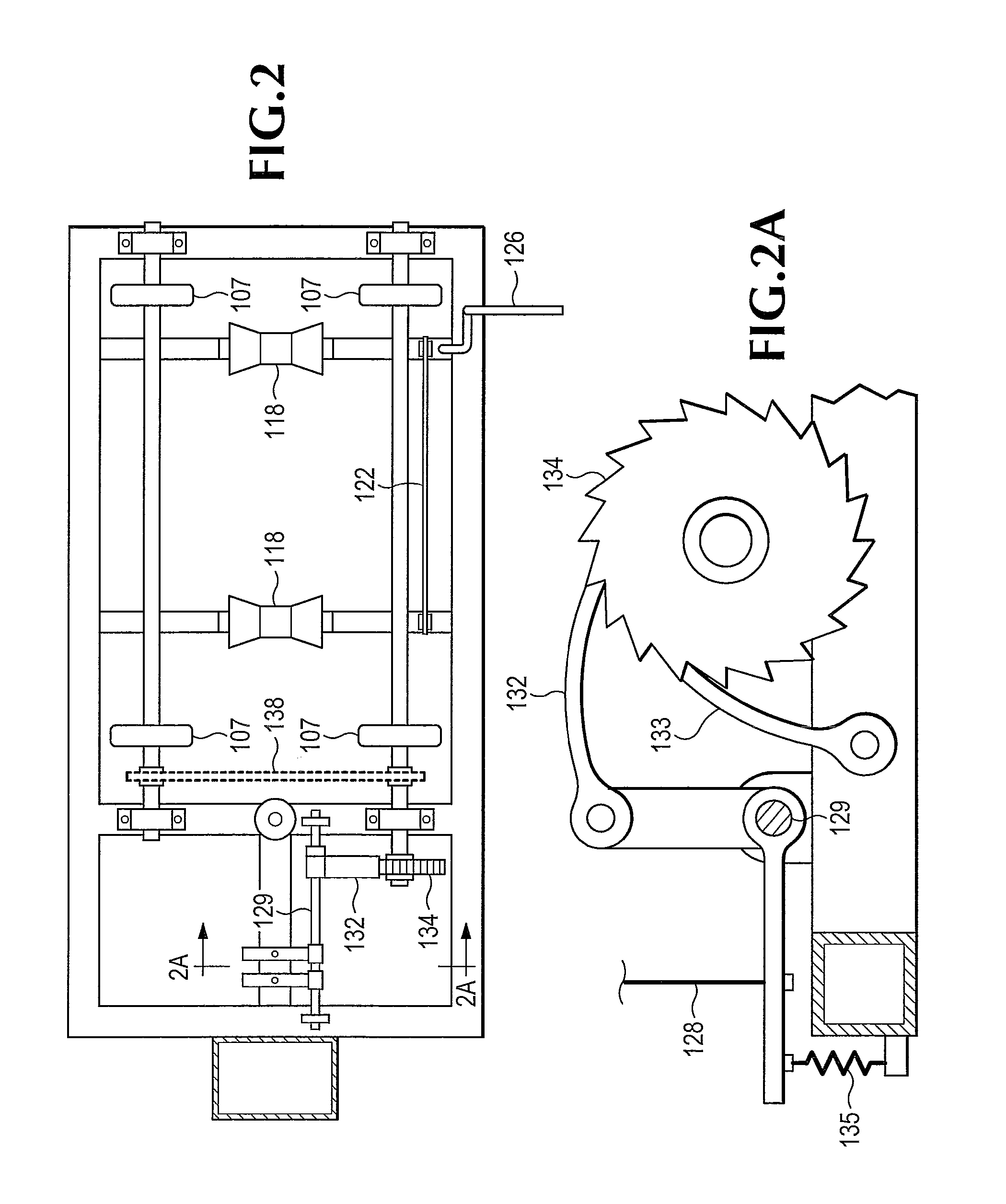Method for reconditioning barrels
- Summary
- Abstract
- Description
- Claims
- Application Information
AI Technical Summary
Benefits of technology
Problems solved by technology
Method used
Image
Examples
Embodiment Construction
[0021]A barrel 10 which has been used in the aging of wine or other alcoholic spirits suffers from several defects which prevent its easy reuse. To begin with, the wood on the inside surface is thoroughly saturated with liquid, and may, in some cases, have formed pockets or “blisters” of liquid. This wetness encourages the growth of microorganisms such as acetobacter which may impart off flavors or even leach toxins into anything subsequently stored in the barrel 10. Even after drying, the dried remnants may impart flavor, muddying the distinction between vintages. Further, any flavor or character which the wood itself might be expected to impart during aging has already passed into the now-bottled spirits, and is unavailable for subsequent batches. Finally, wine is well-known to leave a residue of acetone in the wood of barrels 10 used for aging. Acetone is both toxic and undesirable from a flavor standpoint.
[0022]Saturated wood may be removed by scraping it out with mechanical mea...
PUM
| Property | Measurement | Unit |
|---|---|---|
| Temperature | aaaaa | aaaaa |
| Temperature | aaaaa | aaaaa |
| Fraction | aaaaa | aaaaa |
Abstract
Description
Claims
Application Information
 Login to View More
Login to View More - R&D
- Intellectual Property
- Life Sciences
- Materials
- Tech Scout
- Unparalleled Data Quality
- Higher Quality Content
- 60% Fewer Hallucinations
Browse by: Latest US Patents, China's latest patents, Technical Efficacy Thesaurus, Application Domain, Technology Topic, Popular Technical Reports.
© 2025 PatSnap. All rights reserved.Legal|Privacy policy|Modern Slavery Act Transparency Statement|Sitemap|About US| Contact US: help@patsnap.com



